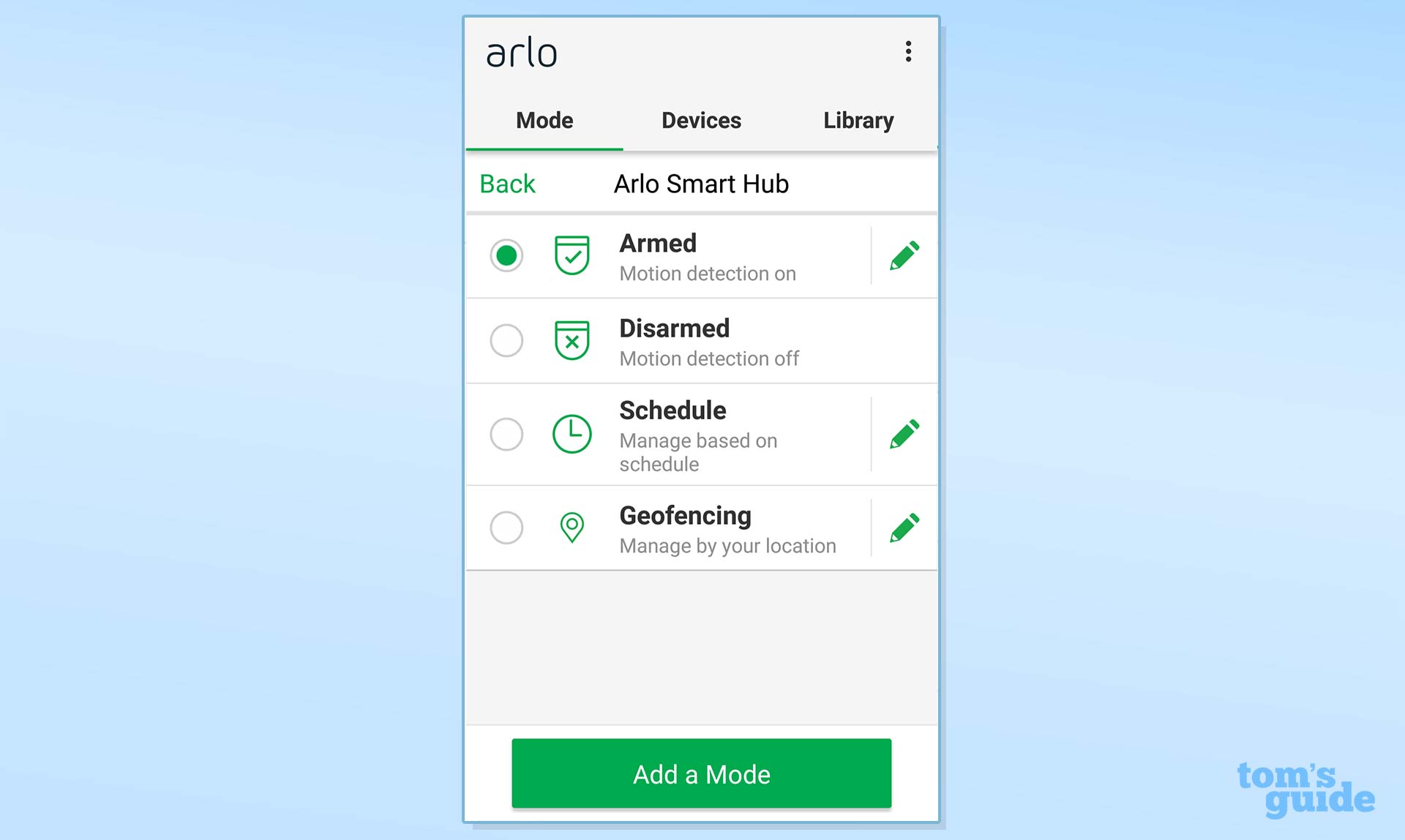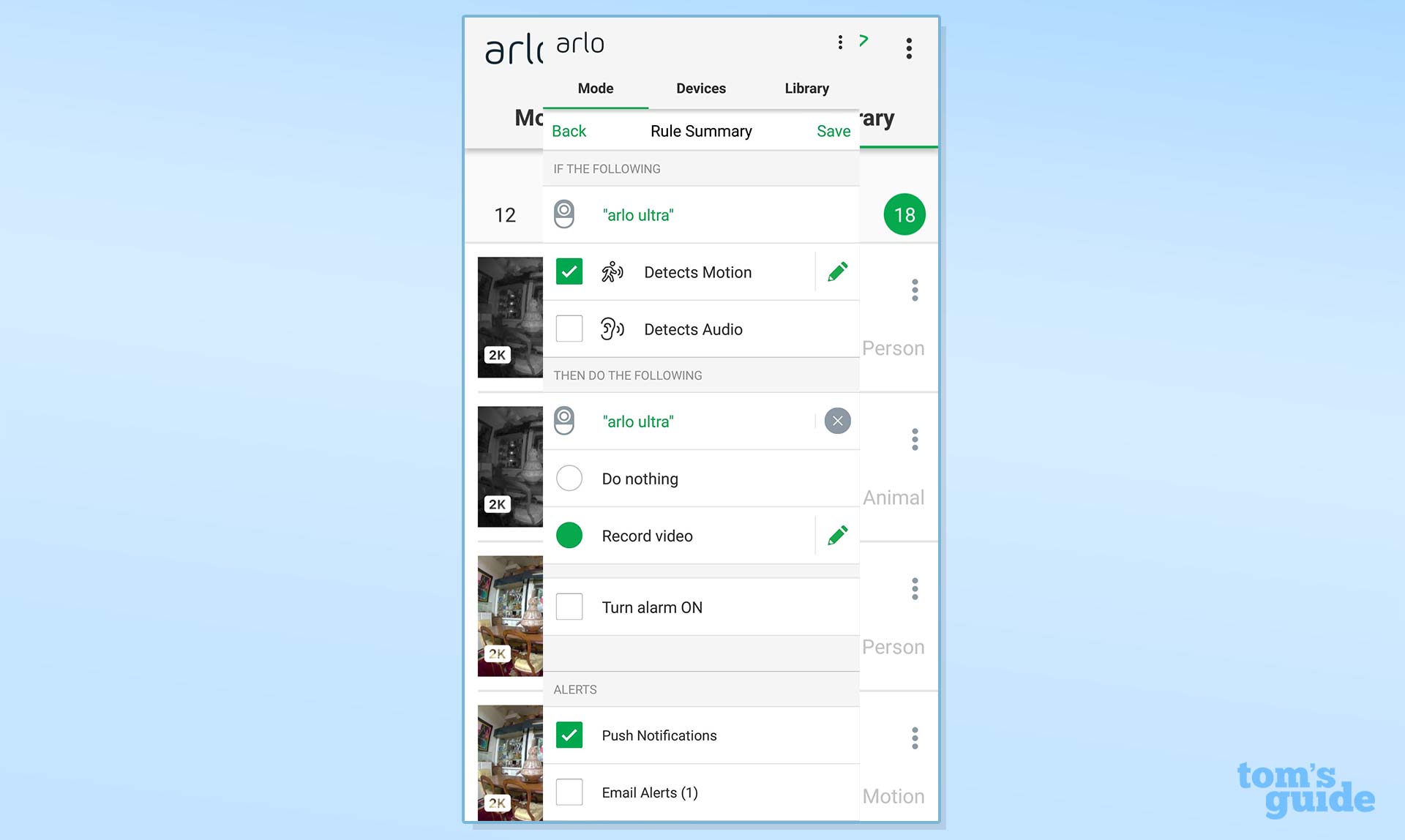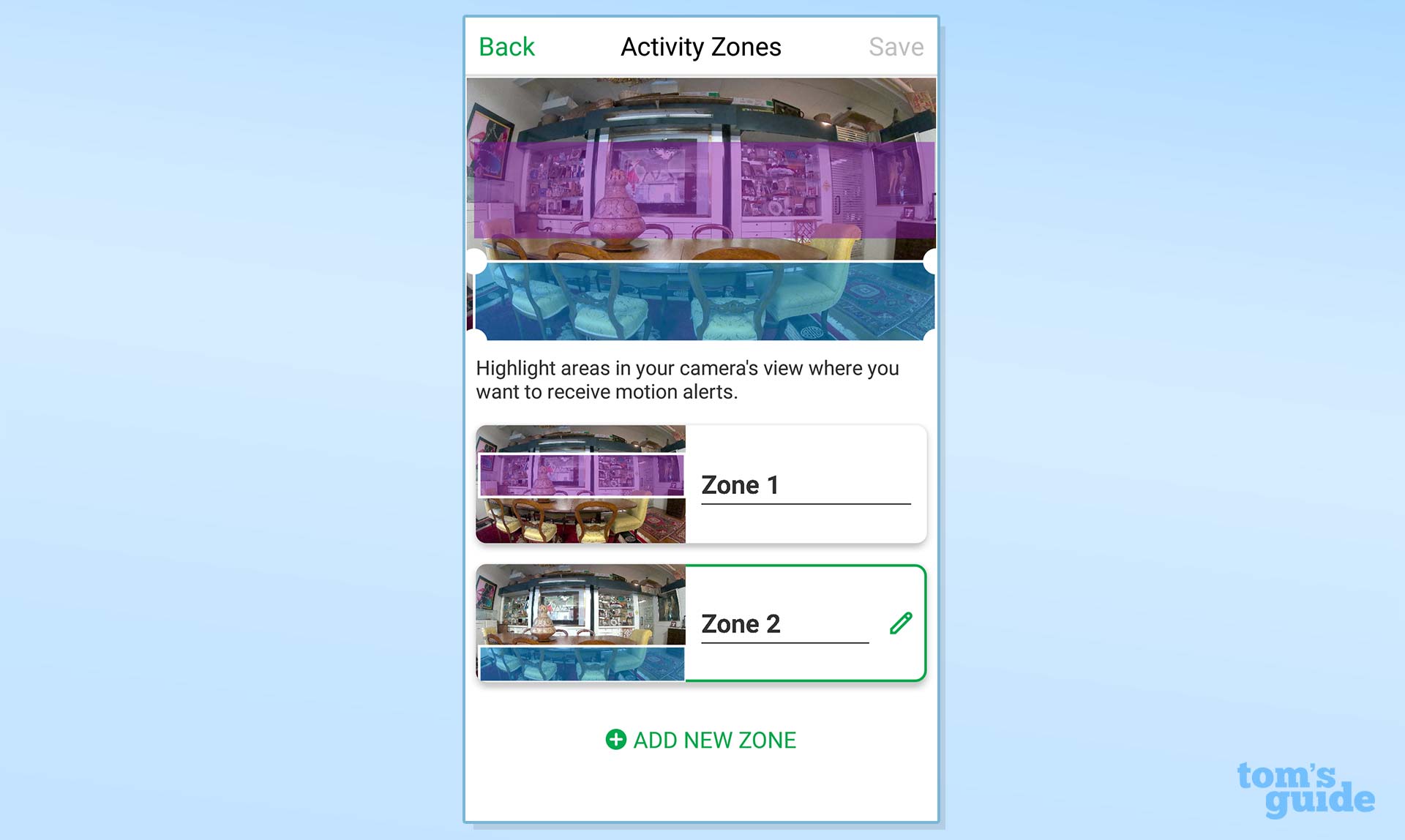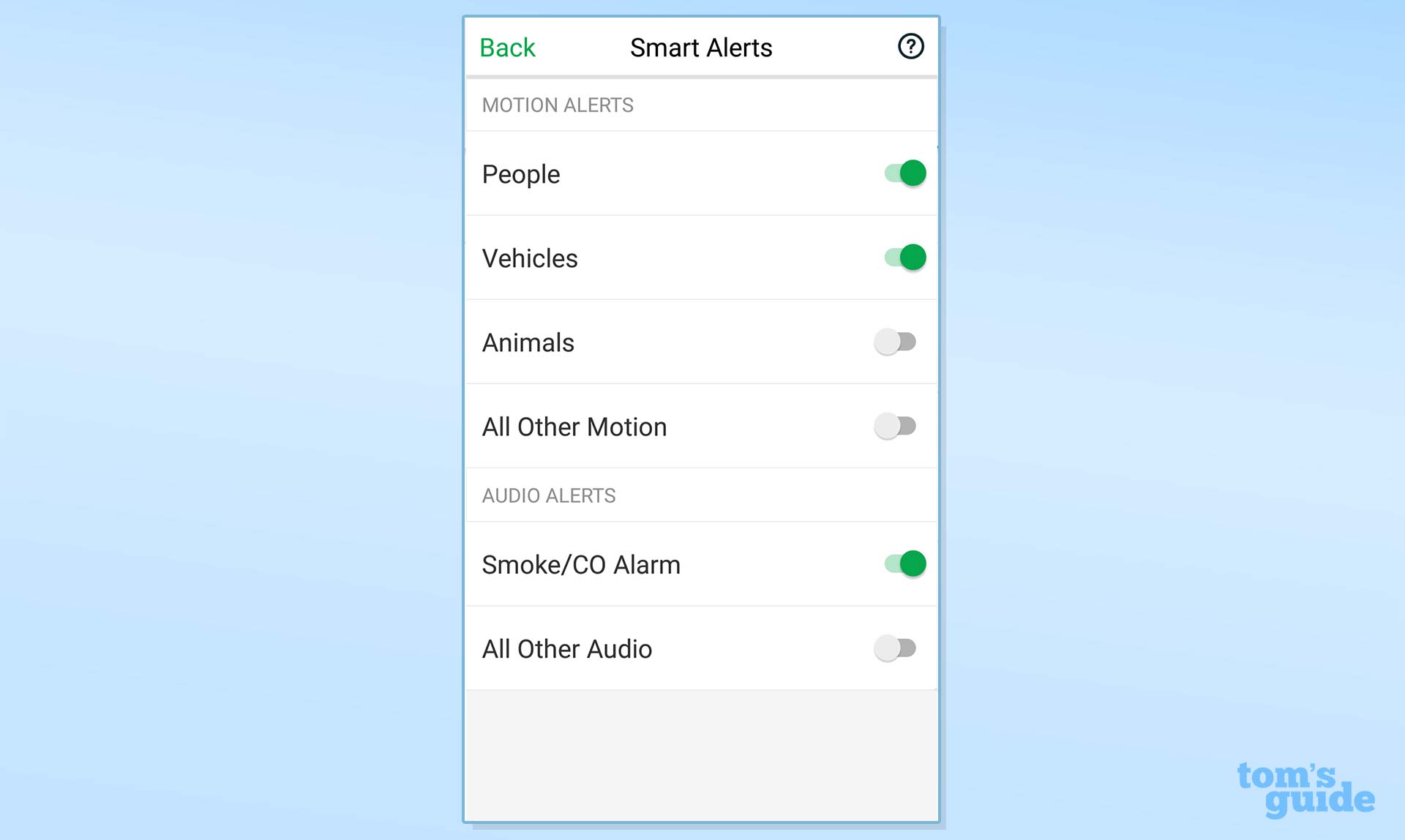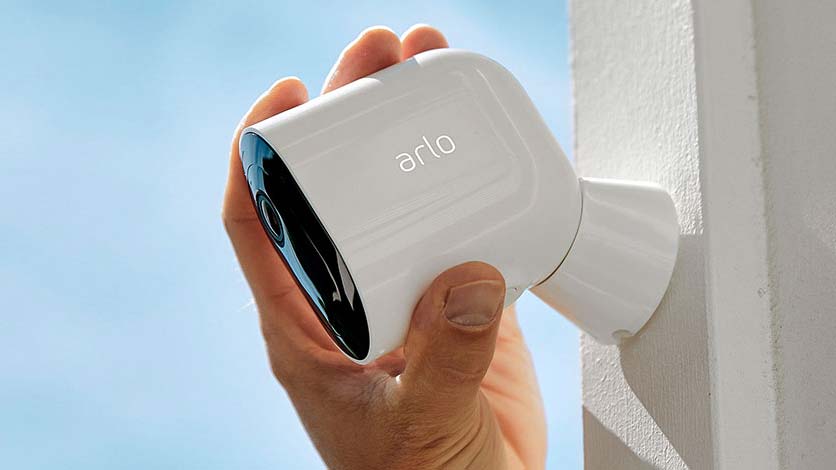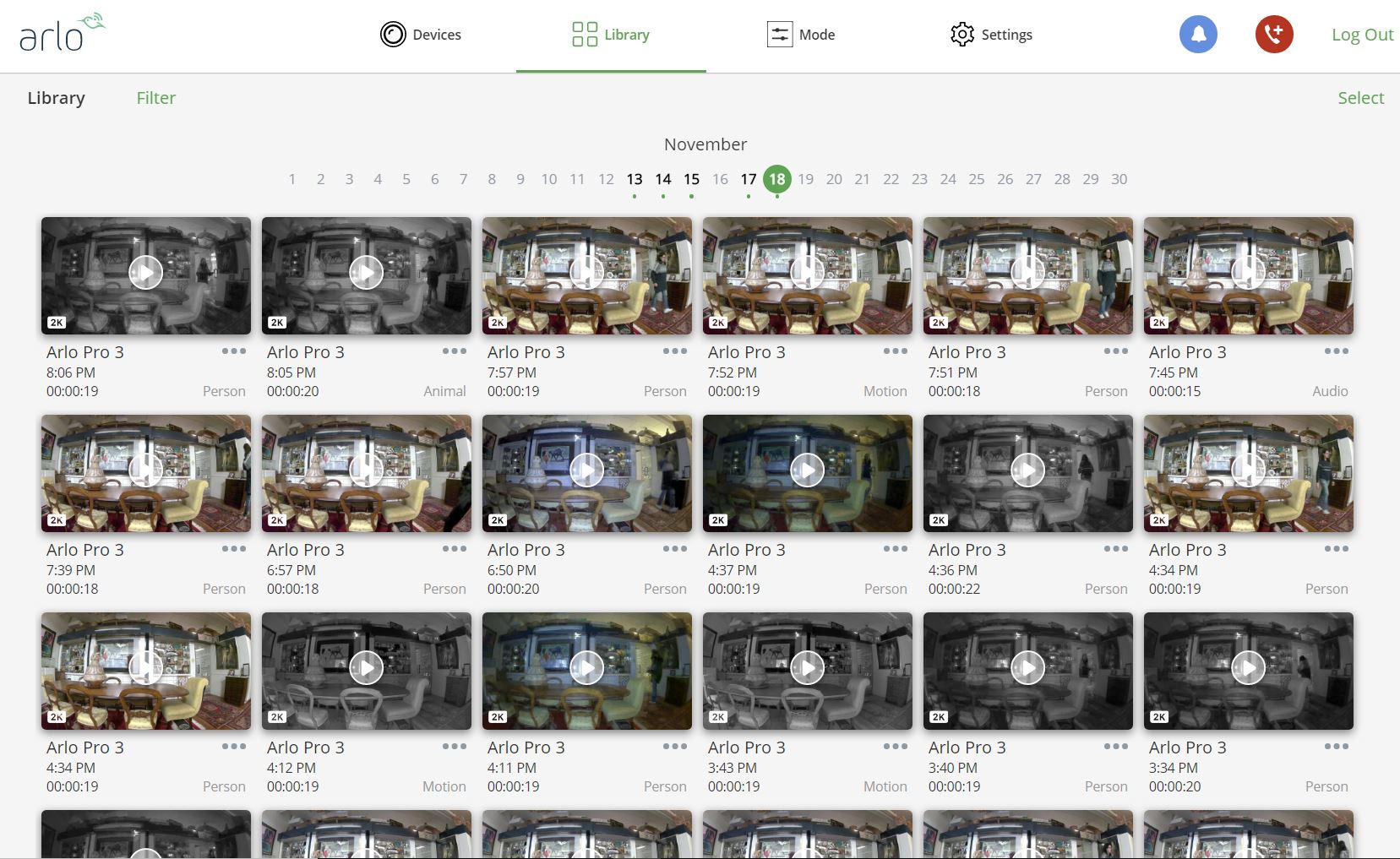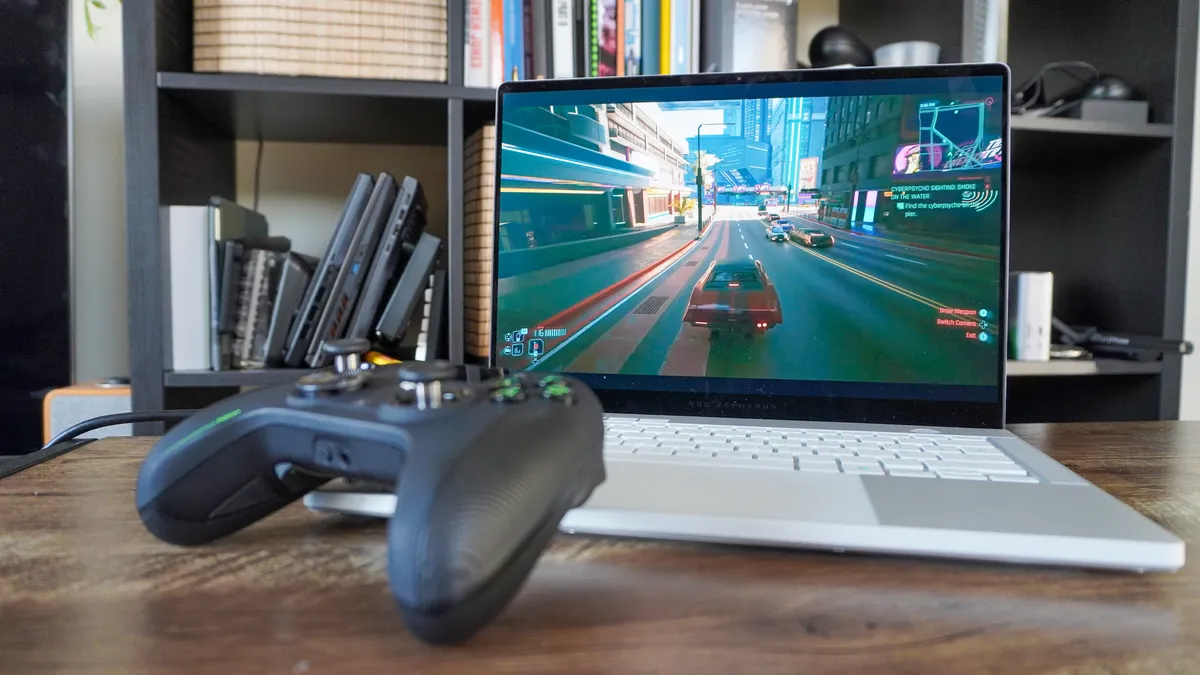Tom's Guide Verdict
The Arlo Pro 3 is a good security camera, but less-expensive cameras offer better video quality.
Pros
- +
Quality daylight video
- +
Optional color night videos
- +
Clear audio
- +
Comprehensive, easy-to-use software
- +
Rich set of motion-and-sound-detection tools
Cons
- -
Subscriber-exclusive features
- -
No ongoing free cloud plan
- -
High price
- -
Blurry night videos
- -
Login that's limited to one device at a time
Why you can trust Tom's Guide
Arlo has made some of the best home security cameras. Though pricey, they've consistently delivered excellent video, a robust feature set, and a generous seven-day free cloud storage plan. However, the $200 Arlo Pro 3 doesn't quite live up to its predecessors. It's still good; in fact, some features, such as the 2K resolution, are better than those of most other Arlo cameras.
However, the Pro 3 struggles to compete in an industry in which less-expensive cameras have been upping the stakes in quality, features and performance. Just as important, Arlo made a poor strategic decision when it decided not to offer Pro 3 (and Arlo Ultra) buyers its usual free basic cloud storage plan. That means that not only is the Pro 3 pricey, but the cost of ownership has increased. While it's one of the best outdoor security cameras, you should shop around.
Arlo Pro 3: Price and availability
The Arlo Pro 3 was introduced in the fall of 2019, when this review first appeared. As of March 2021, you can get a two-camera kit plus the base station for $299.
Arlo launched its successor, the Arlo Pro 4 in late 2020, which is similar in most respects to the Arlo Pro 3, except that the Pro 4 can connect directly to your Wi-Fi, rather than requiring a base station. Individual cameras are $179 each.
Arlo Pro 3: Design
Following the usual Arlo form factor, the Pro 3 is a white, ovoid device measuring approximately 3.25 x 3.25 x 2 inches, with a flat, black faceplate. The speaker is on the front, below the lens, and the microphone is above the lens. As with previous Arlo cameras, the Pro 3 has no legs. When it's attached to the magnetic mount (which measures 2 inches in diameter and 1.5 inches tall), the Pro 3 can be positioned in any orientation.
A motion-activated 6500K spotlight above the lens and microphone enables color night videos. (The Arlo Ultra has two such spotlights.) Or, you can turn it off and capture night videos in traditional infrared gray scale. The camera also has an 80-decibel siren that you can set to be triggered by motion and/or sound, or manually activated remotely.
The Pro 3 is a wireless device that's IP65 weather resistant, so it can be used outdoors as well. Arlo claims that the rechargeable battery can last up to six months. Or, you can power the camera with the included skimpy, 3-foot charging cable that connects magnetically to the base of the camera. The cable's USB power block is about 1.75 x 1.75 x 1 inches and doesn't obscure adjacent outlets. An optional 8-foot indoor cable costs $24.99, and a 25-foot outdoor cable is $49.99. You can also buy an external dual-battery charging station ($49.99), extra batteries($49.99 each) and a solar panel for outdoor power ($79.99).
Get instant access to breaking news, the hottest reviews, great deals and helpful tips.
Like the Pro 2 and Ultra cameras, the Pro 3 requires a base station. The 5 x 6 x 1.5-inch SmartHub that's sold in many Pro 3 packages can support up to 20 cameras and other Arlo security devices depending on your network's bandwidth. Three ports on the back connect to the included 79-inch Ethernet cable and 70-inch power cable, and there's also a port that supports a USB 2.0 external storage device up to 2TB (not included).
Arlo Pro 3: Specs
Video Resolution: 2K
Field of View: 160 degrees
Night Vision: Spotlight for color, two infrared LEDs for black and white
Network Connectivity: 802.11bgn Wi-Fi (2.4 GHz only) for the camera-to-hub connection, plus Ethernet for the hub-to-network connection.
Smart Home Connectivity: Amazon Alexa, Google Assistant and IFTTT
Audio: Full duplex two-way audio
Mobile Devices Supported: Android 4.1 and higher (5.0 or higher is recommended), iOS 10.3 to iOS 13.
Web Browsers Supported: Firefox 3.5 and above, Safari 3 and above, any version of Google Chrome, and Internet Explorer 10 and above
Cloud Storage and Monitoring: Arlo Smart plan is $2.99/month/camera for 30-day video history. Smart Premier is $9.99/month for up to 10 cameras. Smart Elite is $14/month for up to 20 cameras for a 60-day video history.
Local Storage: via a USB storage device (not included)
Security: 128-bit SSL, AES-128, TSL, two-factor authentication
MSRP: Pro 3 camera systems start at $499.99 for two cameras and the required SmartHub. Add-on Pro 3 cameras start at $199.99.
Arlo Pro 3 review: Video quality
The Pro 3's 2K (1440p) resolution is significantly higher than the Pro 2's (1080p) but not as high as the Arlo Ultra's (4K). In my tests, I used the full 160-degree field of view, rather than stepping it down to 125 or 110 degrees.
My daylight videos were well exposed, with good color, but the details were not crisp. The outdoor daylight videos had acceptable exposure, even on cloudy days. Motion blur was insignificant.
The Pro 3 (like the Ultra) can capture color night videos when the spotlight feature is enabled. The camera will turn on this feature in low light when it senses motion. You can set it to be constant, flash or pulsate. I preferred the constant-light setting so the entire period of motion would be illuminated and in color. You can also turn on the spotlight manually from the Live View to better see who or what is in the frame, as well as use a slider to adjust the brightness.
My color night videos were hazy, with blurred details. In the indoor videos, faces were more easily recognizable than they were outdoors (due to the distance involved outside). Also, in the outdoor videos, reflections from the spotlight made the license plate completely illegible. However, if the license plate were angled differently, it might be readable.
If you turn off the spotlight, the Pro 3 will use two infrared LEDs to capture gray-scale night videos. I was disappointed in the quality of the infrared night videos. They were soft and often blurry, with few details and low contrast. As with the spotlight, the LEDs reflected on the license plate, making it impossible to read. The infrared videos from the Ezviz C1C ($39.99) were far better.
Arlo Pro 3 review: Audio quality
The Pro 3's two-way audio is full duplex, which means it works like a phone rather than the half duplex of a walkie-talkie-like device. When I spoke to someone standing in front of the camera through the Arlo app on my phone, the audio wasn't loud, but it was audible and clean. Audio from the camera to the phone was very soft, but it was clear when I held the phone close.
The biggest problem I had with the two-way audio was that, whenever the phone received a notification that a person was in the room, it turned off the two-way audio. Because I was talking to someone in the room, the alerts pinged frequently, forcing me to restart the two-way audio and thereby disrupt our conversation.
Recorded sound was clear and had good volume within about 20 feet.
Arlo Pro 3 review: Motion and sound detection
Arlo uses modes to define what happens when motion or sound is detected. The default modes are Armed, Disarmed, Schedule and Geofencing. You can also create custom modes.
The app gives you the flexibility to schedule when the camera will respond to motion or sound, so you can set several time periods per day and easily repeat them for specific days of the week.
Arlo guides you through the process of editing the Armed mode or creating a custom mode. First, you select which attached camera will be the trigger and decide whether the trigger should be motion and/or sound. Then, you can set the motion and sound sensitivity level. The next screen directs you to decide what will happen: nothing, record video (until activity stops up to 300 seconds or for a customized length of time), sound the siren on the SmartHub, send push notifications to your mobile device and/or send alert emails to one or several recipients.
I was unable to select sound as a trigger in either the edit or custom mode definition on my Android test phones, though it worked on my iOS test phone. Arlo says it hasn't encountered any similar problems.
Arlo's Motion Detection test is more useful now. As with previous Arlo cameras, I was able to test the camera's responsiveness to motion (and found that a sensitivity of 37 out of 100 worked well). In addition, the app now automatically sets the camera's motion sensitivity to the setting on the slider that I chose during my tests. (Before, I had to go to the video settings screen and manually adjust the slider.)
Arlo Pro 3 review: Activity zones
The Arlo app allows you to define up to five rectangular Activity Zones that the camera will monitor for motion. I would have preferred to create irregular, polygonal zones, as you can with Ring security cameras. Ezviz and Wyze cameras also have an innovative approach that lets you select numerous small squares on a grid.
Unfortunately, Arlo's modes still don't use the information the Activity Zones provide. So I couldn't, for instance, set different Zones to be active at various times or trigger different kinds of responses.
Arlo Pro 3 review: Smart alerts
If you subscribe to a cloud plan (starting at $2.99/month), you will have access to the Arlo AI, which can distinguish among people, vehicles and animals. In addition, it will send alerts if your smoke or carbon monoxide detectors sound, provided they conform to the following industry standard alarms: T3 for smoke detectors (three intermittent beeps, followed by a period of silence) and T4 for CO detectors (four intermittent beeps, followed by a period of silence).
However, with human and animal detection turned on, the Pro 3 periodically identified my 45-pound mixed-breed dog as a person. I found the non-premium Activity Zone tool more effective. When I created an Activity Zone that didn't include the lower portion of the frame (where my dog wanders), I significantly reduced the number of false "person" alerts.
Arlo Pro 3 review: Track and zoom
Like the Arlo Ultra, the Pro 3 has a feature called Auto Zoom and Tracking. When it is turned on, it automatically zooms into and follows moving objects (digitally rather than physically). It works best outdoors, where the camera's view covers more ground. When Zoom and Tracking is activated, the Pro 3 records in 1080p, reducing its resolution advantage over the cameras that physically pan, such as the Wyze Cam Pan and the Ezviz C6CN.
Arlo Pro 3 review: Smart home integration
You can view the Pro 3's video feeds using voice commands on Alexa or Google Assistant devices with built-in displays. With IFTTT, you can set up custom routines based on events or actions.
Arlo Pro 3 review: Cloud storage
With most of its cameras, Arlo includes an ongoing free seven-day rolling cloud storage plan. Unfortunately, the company has chosen not to make that available for the Pro 3 (or the Ultra), which increases the cost of ownership.
If you have a USB 2.0 device (up to 2TB) attached to the SmartHub, you can record your alert videos even if you don't subscribe to a cloud plan. However, all manually recorded videos and pictures are recorded to the cloud only. What's more, you won't be able to view the videos saved to the USB device while it is connected to the hub. Instead, you'll need to remove it from the hub and attach it to a computer or tablet. That means you won't have remote access to your video history.
Also, a number of the advanced features are available only if you subscribe to a cloud plan. Subscribers have remote access to videos, as well as AI-assisted person, animal, vehicle and package detection. Also, if you have a cloud plan, notifications on your phone's lock screen will include thumbnails, and you'll be able to respond to notifications by sounding the siren, calling a friend or dialing 911 without unlocking your phone. Given that the human-versus-animal detection didn't work as well as simply defining an appropriate Activity Zone, I'm not convinced that the Smart Alerts add much value.
Arlo's cloud plans are reasonably priced. The basic Arlo Smart plan costs $2.99/month per camera for a 30-day video history. Arlo Smart Premier is $9.99/month and includes cloud storage for up to 10 cameras for the same 30-day plan. Arlo Smart Elite is $14/month for up to 20 cameras and includes a 60-day video history. Here's how Arlo's cloud plans compare to Ring's and Nest's.
Arlo Pro 3 review: Mobile apps and web portal
The Arlo app (both mobile and the web portal) is one of my favorite camera apps. It's intelligently organized, generally uses standard icons, and is easy to navigate while providing a good range of options. However, the web portal still requires Adobe Flash, which is a security risk.
Both the mobile app and the web portal provide full control over the camera and its features. That includes a convenient thumbnail library of alert videos; settings for video, audio, motion and sound detection; and smart notifications. Recent updates to the mobile app have added the ability to mute notifications and implement two-step verification to help prevent unauthorized logins.
One of my pet peeves about the Arlo software still hasn't been addressed: You can't have more than one interface active at a time. So if you are checking out a camera or editing a setting on your phone or computer and a family member logs in from another device, you will be logged out immediately.
Arlo Pro 3 review: Bottom line
Arlo has enjoyed industry-leader status for some time, but it missed the mark with the Pro 3. First, the company discontinued the ongoing, free seven-day cloud storage plan for the Pro 3 and the Ultra — a feature that several much-less-expensive cameras offer. What's more, Arlo hasn't kept up with improvements in infrared night videos.
If you want the great Arlo app, I recommend looking at the company's earlier cameras, such as the Arlo Pro 2, which still come with a free basic cloud plan. If you're looking for another strong option, read our EufyCam 2 review, which also has some trouble with night videos, but is around the same price, and sometimes a bit less expensive than the Arlo Pro 3.

Sally Wiener Grotta is the president and lead analyst of DigitalBenchmarks test lab (www.DigitalBenchmarks.com). The scripts she created for various tech publications for testing and evaluating digital cameras, image quality, software and related technologies have become industry standards. Among her numerous books is the first major volume on image processing “Digital Imaging for Visual Artists” (McGraw-Hill), co-authored with Daniel Grotta. Her hundreds of reviews, stories and columns have appeared in scores of magazines, journals and online publications.









